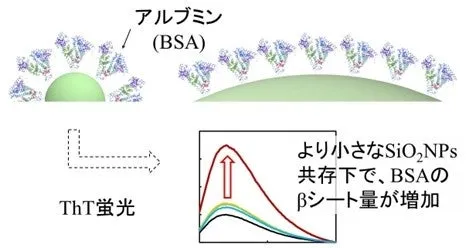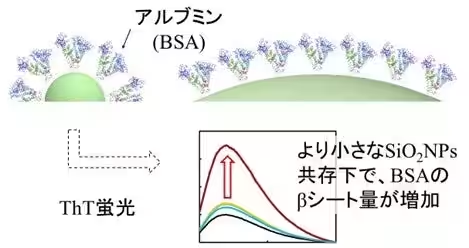

The Impact of Silica Nanoparticle Size on Protein Secondary Structure: Key Insights for Biomedical Applications
Impact of Silica Nanoparticle Size on Protein Structures
Recent research led by a group of scientists, including Naoya Sakaguchi from Tokyo University of Science, sheds significant light on the effects of silica nanoparticle size on protein secondary structures. Given the growing potential of nanoparticles in biomedical applications, understanding their interactions with proteins is vital, especially since these interactions can lead to structural aberrations and potential biotoxicity.
The research team focused on spherical silica nanoparticles of varying sizes—specifically, 10 nm, 100 nm, 1 μm, and 10 μm—examining their impact on the secondary structure of human serum albumin (HSA) protein. They found that the 10 nm nanoparticles demonstrated a strikingly greater influence on HSA’s secondary structure than the larger ones. This discovery emphasizes that smaller nanoparticles can significantly alter protein conformation, thereby eliciting broader interactions.
Research Overview
The investigation utilized advanced techniques such as Thioflavin T (ThT) fluorescence measurement, liquid film Fourier-transform infrared spectroscopy (FT-IR), and circular dichroism (CD) to analyze how different sized silica nanoparticles affect the structure of albumin. The findings revealed that exposure to 10 nm silica nanoparticles increased the beta-sheet content of albumin, a crucial component of its secondary structure. This indicates that smaller nanoparticles facilitate more extensive protein interactions, potentially leading to pronounced structural changes.
The results also pointed out that the high curvature and mass-specific surface area of the smaller silica nanoparticles promote greater interactions with proteins. Understanding these interactions is pivotal for alleviating toxicity concerns as nanoparticles gain momentum in medical usage, from drug delivery systems to biosensing technologies.
Implications for Future Research
This study marks a significant advancement in the field of nanomedicine. An important implication is that as we leverage nanoparticles in various biomedical applications, special attention must be given not only to their therapeutic benefits but also to their potential side effects on protein structures. The properties of nanoparticles, such as size, surface charge, and even the ionic conditions in the solvent, play critical roles in determining their interaction with proteins.
The team hopes that these insights will enable further exploration into the designing of safer nanoparticles for therapeutic purposes. As the understanding evolves, there may be vast opportunities for utilizing nanoparticles in engineering applications within the pharmaceutical and biomedical industries. Future studies may lead to the development of bio-systems that exploit these nanoparticles for drug delivery while minimizing adverse reactions.
Conclusion
This groundbreaking research provides essential insights into how ultra-small silica nanoparticles interact with proteins, highlighting their significant role in influencing protein conformation. As we continue to advance in this area, it is incumbent upon researchers and practitioners to keep the potentially biotoxic effects in mind and innovate accordingly to harness the full potential of nanomaterials while minimizing risks. The future of nanomedicine is promising, but thorough understanding and careful application remain critical.

Topics Health)










【About Using Articles】
You can freely use the title and article content by linking to the page where the article is posted.
※ Images cannot be used.
【About Links】
Links are free to use.